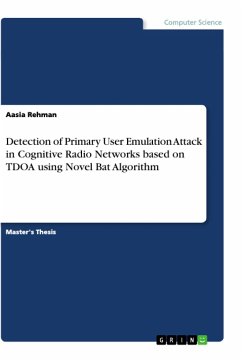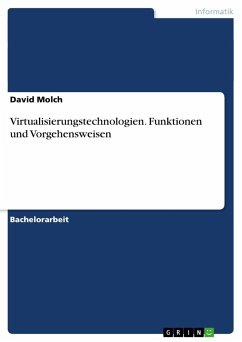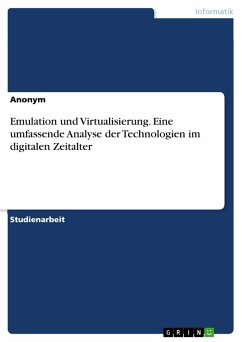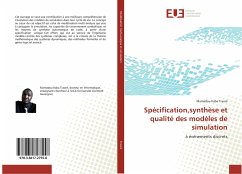
Detection of Primary User Emulation Attack in Cognitive Radio Networks based on TDOA using Novel Bat Algorithm
Versandkostenfrei!
Versandfertig in 1-2 Wochen
47,95 €
inkl. MwSt.

PAYBACK Punkte
0 °P sammeln!
Master's Thesis from the year 2017 in the subject Computer Science - General, grade: 8.63, , course: M. Tech - Cognitive Radio Networks, language: English, abstract: Cognitive Radio Network (CRN) Technology makes the efficient utilization of scarce spectrum resources by allowing the unlicensed users to opportunistically use the licensed spectrum bands. Cognitive Radio Technology has gained a lot of attention from the researchers over the years however insufficient research has been done related to its security. Cognitive Radio Network due to its flexible and open nature is vulnerable to a numb...
Master's Thesis from the year 2017 in the subject Computer Science - General, grade: 8.63, , course: M. Tech - Cognitive Radio Networks, language: English, abstract: Cognitive Radio Network (CRN) Technology makes the efficient utilization of scarce spectrum resources by allowing the unlicensed users to opportunistically use the licensed spectrum bands. Cognitive Radio Technology has gained a lot of attention from the researchers over the years however insufficient research has been done related to its security. Cognitive Radio Network due to its flexible and open nature is vulnerable to a number of security attacks. In this thesis we recognize different types of attacks at different layers of protocol stack. This thesis is mainly concerned with one of the physical layer attack called Primary User Emulation Attack and its detection. PUE Attack adversely affects the CRN performance and can also sometimes lead to Denial of Service to CR networks. In Primary User Emulation Attack the attacker imitates the signal characteristics of the Primary User. This thesis first provides introduction to CRN, its architecture and sensing techniques and also discusses various attacks and their counter measures. Then it mainly focuses on PUE attack and examines its mitigation techniques. This thesis solves the problem of PUE attack by localization technique based on TDOA measurements with reduced error in location estimation using a Novel Bat Algorithm (NBA). A number of cooperative secondary users are used for detecting the PUEA by comparing its estimated position with the known position of incumbent. The main goal of Novel Bat Algorithm (NBA) is to minimize two fitness functions namely non-linear least square (NLS) and the maximum likelihood (ML) in order to optimize the error in estimation.After evaluation, simulation results clearly demonstrates that NBA results in reduced estimation error as compared to Taylor Series Estimation (TSE) and Particle Swarm Optimization (PSO) and it also needs smaller number of secondary users for cooperation. Also maximum likelihood function performs better than non-linear least square function.












